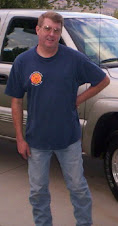Am I weird, or would it be fun one night to have all the kids each read one short educational blurb about the areas we’ll be seeing while we’re all sitting around the ‘fake’ campfire???? I could just print a bunch of them out and then pass them out when we’re there. Or would that be boring?? Here are a few examples.
Escalante, Utah
Escalante is a city in Garfield County, Utah, United States, along Utah Scenic Byway 12. As of the 2000 census, the city population was 818. the town was named after Silvestre Vélez de Escalante, a Franciscan missionary and the first European explorer of the region. In 1776, Escalante and his Spanish superior Francisco Atanasio Domínguez left from Santa Fe, New Mexico on an attempt to reach Monterey, California (EarthMetrics,1989). During this journey, usually referred to as the Dominguez-Escalante Expedition, Escalante and his companions passed by the Grand Canyon and were the first white men to enter Utah.
San Juan Expedition
The San Juan Expedition (also known as the San Juan Mission or the Hole-In-The-Rock Expedition) was a group of Mormon settlers intent on establishing a colony in what is now southeastern Utah, in the western United States. Their difficult passage through the deep canyons of the Colorado River represents the ingenuity and determination needed during the country's era of western exploration and settlement. After arriving in the Salt Lake Valley in 1847, the Mormons had expanded their settlements throughout central and southeastern Utah. In 1878 the leaders of their church decided to establish a new colony in a remote area to the east of the Colorado River, in what is now the Four Corners Area. They scouted possible sites, deciding on the fertile valley of Montezuma Creek just north of the San Juan River. Routes to the new settlement were also scouted, including the established path of the Old Spanish Trail and a long route around the southern rim of the Grand Canyon. The expedition decided, however, to use a more direct (but largely unknown) route that would be hundreds of miles shorter. They would travel through the relatively benign terrain near the...
Box-Death Hollow Wilderness
The Box-Death Hollow Wilderness is located in south-central Utah, USA, on the Dixie National Forest. Vertical gray-orange walls of Navajo sandstone stand above two canyon tributaries of the Escalante River in Box-Death Hollow. The name Death Hollow gives reference to a number of livestock that plunged to their death trying to cross the steep canyon. Running north-south through a steeply dipping monocline, Pine Creek forms the box canyon (a canyon accessible only at the lower end) known appropriately as "The Box." Death Hollow Creek, east of The Box, has carved its way through a gently dipping monocline. Raging waters often flood these canyon narrows after a rain. Pinyon and juniper cover many of the plateaus above the canyons. Brown and rainbow trout are plentiful in Pine Creek and in portions of Sand Creek. Along the creek banks, you may see mule deer, an occasional cougar, or even elk in winter. Nine miles of trail run the distance of "the Box", while hiking in the remainder of this wilderness requires following drainages or undesignated routes. The larger Phipps-Death Hollow Outstanding Natural Area, a Bureau of Land Management wilderness study area,...
Thursday, June 19, 2008
Subscribe to:
Post Comments (Atom)





2 comments:
I think that would be way cool to hear the stories. Do you know if we cant have fires for sure?
I am always interested in hearing about the history of where we are visiting. So I think it's a good idea and it would be good for the kids too.
Post a Comment